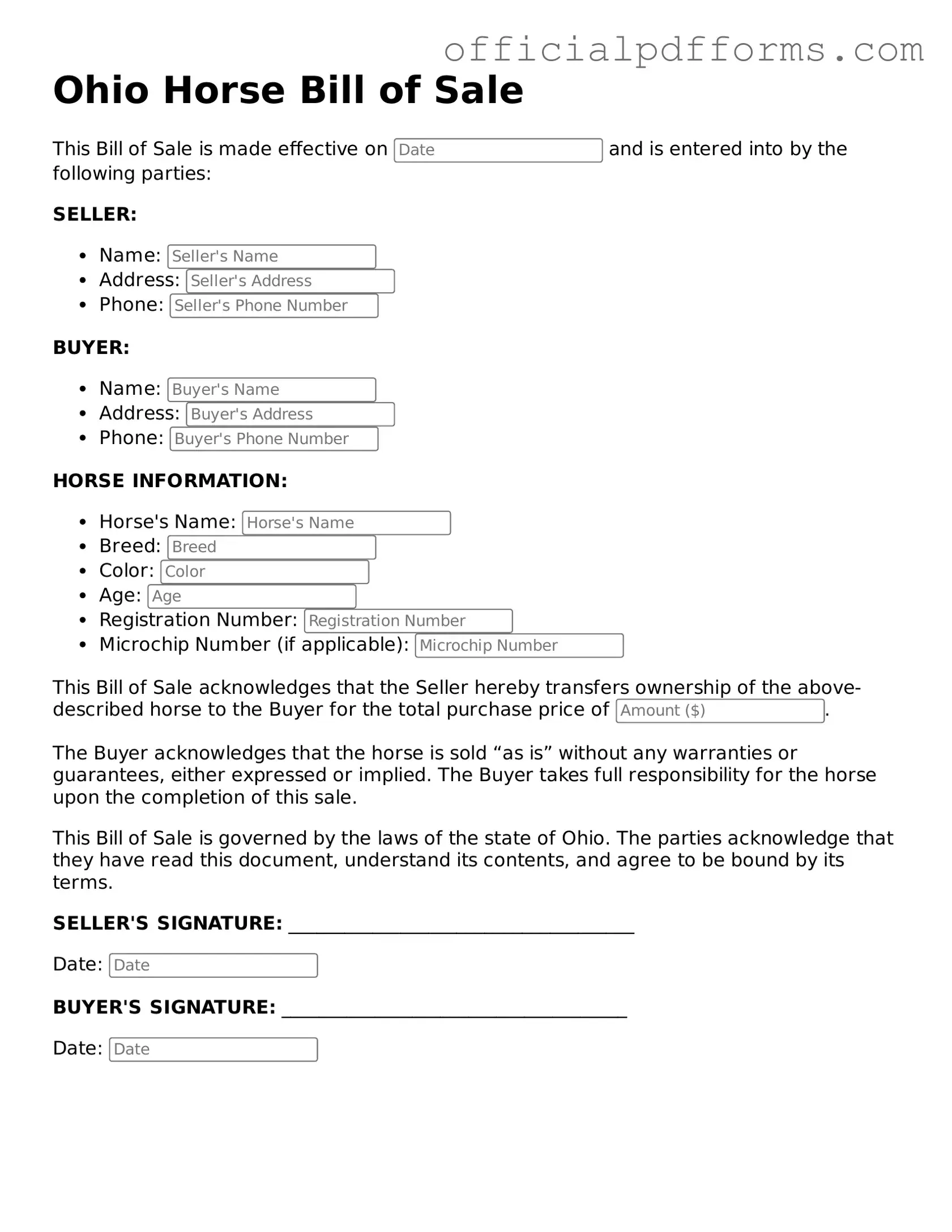What is an Ohio Horse Bill of Sale?
An Ohio Horse Bill of Sale is a legal document that records the sale of a horse from one party to another. It serves as proof of ownership transfer and outlines the terms of the sale, including the purchase price and any conditions agreed upon by both parties.
Why is a Horse Bill of Sale important?
This document is important for several reasons:
-
It provides legal evidence of the transaction.
-
It protects both the buyer and the seller by clearly stating the terms of the sale.
-
It may be required for registration with breed associations or for obtaining insurance.
Key information that should be included in an Ohio Horse Bill of Sale includes:
-
The names and addresses of the buyer and seller.
-
A description of the horse, including breed, age, color, and any identifying marks.
-
The sale price and payment terms.
-
Any warranties or guarantees provided by the seller.
-
The date of the sale.
Is the Horse Bill of Sale required by law in Ohio?
No, a Horse Bill of Sale is not legally required in Ohio. However, it is highly recommended to protect both parties involved in the transaction. Having a written record can help resolve disputes if they arise in the future.
Can the Horse Bill of Sale be modified after signing?
Once signed, the terms of the Horse Bill of Sale are generally binding. Modifications can be made, but both parties must agree to any changes and ideally document them in writing. This ensures clarity and avoids misunderstandings.
Do I need a witness or notarization for the Horse Bill of Sale?
While a witness or notarization is not required for the Horse Bill of Sale in Ohio, having one can provide additional legal protection. A witness can confirm the identities of the parties involved, and notarization adds an extra layer of authenticity to the document.
What if the horse has health issues or defects?
It is crucial to disclose any known health issues or defects in the Horse Bill of Sale. Sellers should be honest about the horse's condition to avoid potential legal disputes. Buyers should carefully review this information before completing the sale.
Can I use a generic Bill of Sale template for my horse transaction?
While a generic Bill of Sale template can be used, it is advisable to use a specific Horse Bill of Sale form. This ensures that all relevant details specific to the horse and the transaction are included, which helps protect both parties.
What happens if there is a dispute after the sale?
If a dispute arises after the sale, the Horse Bill of Sale serves as the primary document to resolve the issue. Both parties should refer to the terms outlined in the bill. If necessary, legal action may be pursued, and the bill can be presented in court as evidence.
Ohio Horse Bill of Sale forms can be obtained from various sources, including online legal form providers, local equestrian organizations, or legal offices. It is important to ensure that the form is compliant with Ohio laws and includes all necessary information.
